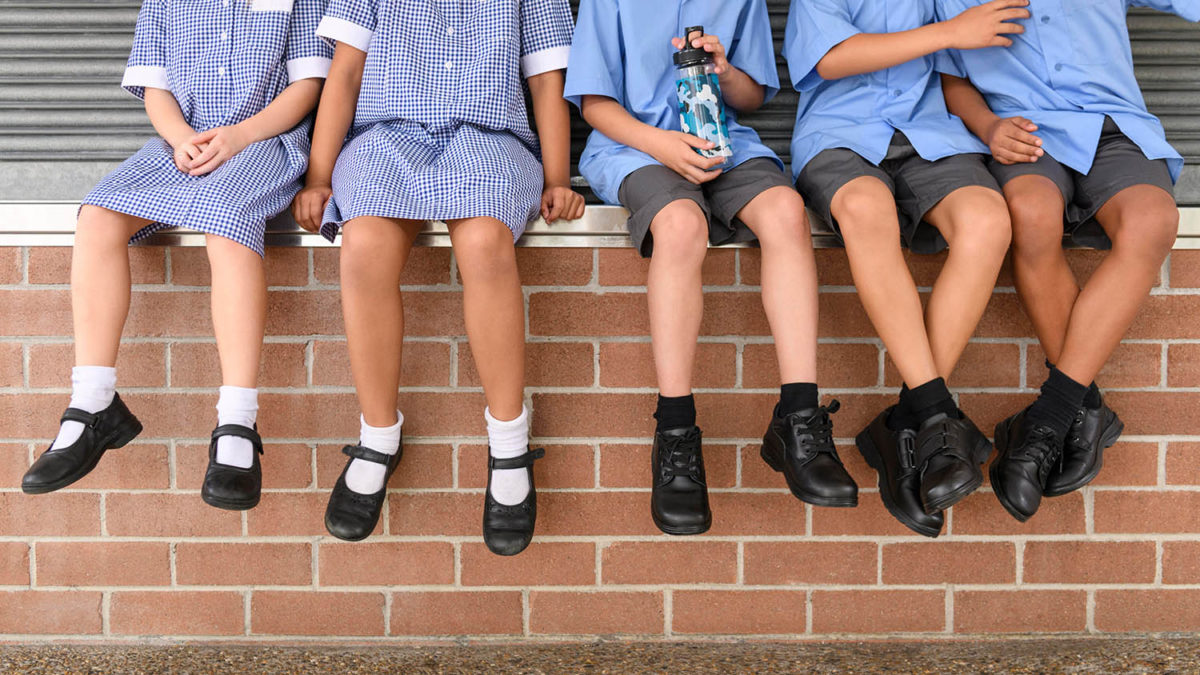
Back to School: Top Tips for Choosing the Right School Shoes
Back to School Series….
Top Tips for Choosing the Right School Shoes
In the first part of our Back to School Series we talked about top tips for choosing the right school bag. Today we are looking at one of the most important things to consider – your child’s shoes!
Let’s start by talking about why well-fitting and supportive shoes are so important……
Some of the bones in babies feet start to form (ossify) as early as 2 months of age and then strengthen from 6 months onwards until they eventually fuse with the lower leg bone. However the bones in the midfoot or arch of the foot start developing from 3 months right up to around 5 years old. The heel continues to ossify from 5-12 years old before completely fusing between 12-22years old.
We know that changes to foot posture (i.e if a child has lax ligaments and rolls their feet in or if they are wearing poor fitting shoes) will in turn affect the posture of the knee and hip and possibly spine. This means that muscles have to adapt and will pull the bones in the direction of force as they grow and may cause the bones to develop misshapen. So this is why it is so important that your little one has the correct supportive shoes for their needs (for the first 5 years at least!).
So how do you know if your child is wearing the correct shoes and what do you need to look for when purchasing new shoes? This is all covered in our Blog below so take a look …..
A good pair of shoes are essential for children’s feet. Don’t be guided by price as the most expensive shoes are not always the best!
Why hand-me-downs are a bad idea!
You may be tempted to hand down shoes to siblings or friends children particularly if they appear to be in good condition but here is why this is not recommended:
- Although the shoe may look ok on the outside, it is likely that on the inside the sole will have worn down from the first child and shaped into their particular foot posture. This means that the second child will not be getting the correct support for their feet.
- The tread on the bottom of the shoe will be worn and your child won’t get the same grip or shock absorption that they would have from a new pair of shoes. This could lead to foot, knee, hip or back pain when running and jumping.
Top 10 Tips for Choosing the right school shoes
- Always get your child’s feet measured by a professional. If they are too small they can restrict growth and affect bone development and too big can cause your child to trip and fall. When checking the size of your child’s shoes you should aim to have approximately 1cm space at the end of the toes inside the shoe.
- Shoes should have a good supportive heel to “cup” and hold their heel in place. It should be firm so that if you squeeze the heel it stays in place and does not squash together.
- There should be good support across the top of the foot to keep the shoe in place (laces or straps) and make sure the shoe is fastened up fully and tightly!
- Choose a flexible shoe that bends across the front/forefoot BUT not so flexible that you can bend or wring the shoe in half!
- Don’t go for soles that are too thick and rigid as your child needs to be able to bend/flex the foot at the toes to be able to “push-off” when stepping and walking. If shoes are too stiff then you will notice your child walking with a restricted and stompy gait!
- Look for arch support within the shoe – the inside of the shoe should be slightly raised to support the arch of the foot.
- Rubber soles that grip and allow for shock absorption.
- A shoe with a slight heel (that is slightly thicker at the heel than the toes) to aid heel strike during walking and shock absorption during running and jumping, Try to avoid fashion shoes with high heels or shoes that are completely flat such as plimsolls, converse style or slip on ballet pumps.
- The shoe should be slightly wider at the toes than the heel to allow room for the toes to move. Avoid pointy shoes as these can squash the child’s toes restricting movement.
- Make sure that the shoe is supportive around the ankle but not too high that it restricts your child’s movement such as squatting, jumping and and climbing. The exception to this is if your child requires increased support due to lax ligaments and your therapist has recommended this – if you are unsure then do get in touch and we can advise you!
Top tip for helping children to put their shoes on the right feet
★ Get your child to choose a large sticker, cut it in half and then put each half in one shoe, along the inside edge so that when you place the shoes together the right way round, the sticker pieces match and form the picture! Try it this week and let us know how you get on!

